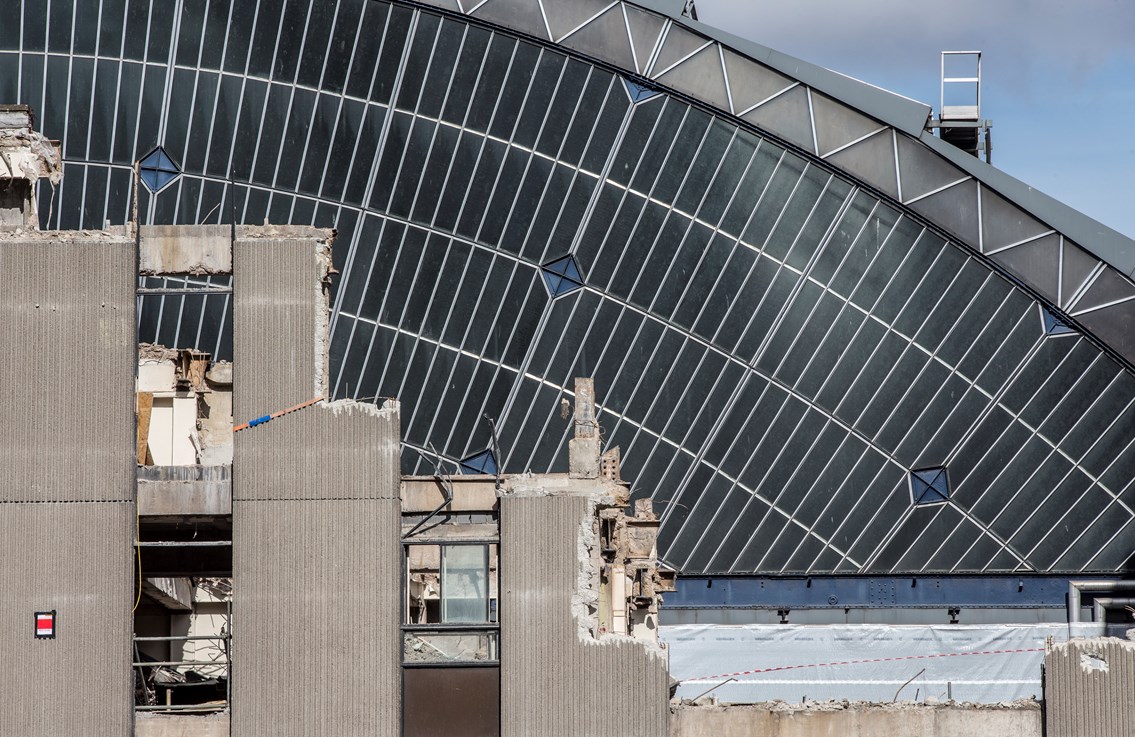Wednesday 5 Jun 2019
Recycling Glasgow ‘Green’ Street station
- Region & Route:
- Scotland’s Railway: Scotland
More than 95 percent of the demolition material produced during the redevelopment of Glasgow Queen Street station has been recycled.
With the station currently being rebuilt to accommodate longer, greener electric trains, the project team has been working hard to make sure the reconstruction works are delivered in an environmentally friendly way.
Network Rail and contractors Balfour Beatty and Dem-Master have ensured that 100 percent of the brick, timber and concrete removed from the site during the demolition work has been recycled for re-use elsewhere in the construction industry.
In total, 14,000 tons of redundant material has been removed from Queen Street by the project and recycled into a range of sectors including house and road building projects and the bio-mass industry.
Some of it, in the form of brick and concrete which had been crushed into small stone, even returned to Queen Street for re-use on-site as part of the base layer for the new station.
The team also significantly reduced the carbon footprint of the demolition works by carrying out the recycling work within Glasgow.
The only materials not considered for recycling were those containing hazardous substances such as asbestos.
Tommy McPake, Network Rail programme manager for Queen Street, said: “Demolishing the redundant building in the heart of Glasgow city centre, and without closing the station, was extremely challenging for the project team.
“We are pleased to have been able to ensure that nearly all of the material removed from the site has been recycled.
“When complete, the new station will transform travel through Queen Street – allowing longer and greener electric trains to use the station and providing customers with a brighter, more modern station building.”
The £120m Scottish Government-funded redevelopment of Scotland’s third-busiest station will be completed in 2020.
A new glass-fronted concourse, almost double the size of the existing space, is being built to accommodate predicted increases in future passenger numbers, and platforms two to five are being extended out towards George Square, taking up most of the space covered by the train shed roof.
The new concourse design is fully accessible with entrances on George Square, Dundas Street and North Hanover Street and is filled with natural daylight. The listed Victorian roof has also been carefully incorporated into the new structure and is fully exposed when viewed from platforms.
Contact information
Passengers / community members
Network Rail national helpline
03457 11 41 41
Latest travel advice
Please visit National Rail Enquiries
Journalists
Network Rail press office - Nick King
Media relations manager (Scotland)
0141 555 4108 / 07515 617073
nick.king3@networkrail.co.uk
About Network Rail
We own, operate and develop Britain's railway infrastructure; that's 20,000 miles of track, 30,000 bridges, tunnels and viaducts and the thousands of signals, level crossings and stations. We run 20 of the UK's largest stations while all the others, over 2,500, are run by the country's train operating companies.
Usually, there are almost five million journeys made in the UK and over 600 freight trains run on the network. People depend on Britain's railway for their daily commute, to visit friends and loved ones and to get them home safe every day. Our role is to deliver a safe and reliable railway, so we carefully manage and deliver thousands of projects every year that form part of the multi-billion pound Railway Upgrade Plan, to grow and expand the nation's railway network to respond to the tremendous growth and demand the railway has experienced - a doubling of passenger journeys over the past 20 years.
Follow us on Twitter: @networkrail
Visit our online newsroom: www.networkrailmediacentre.co.uk

